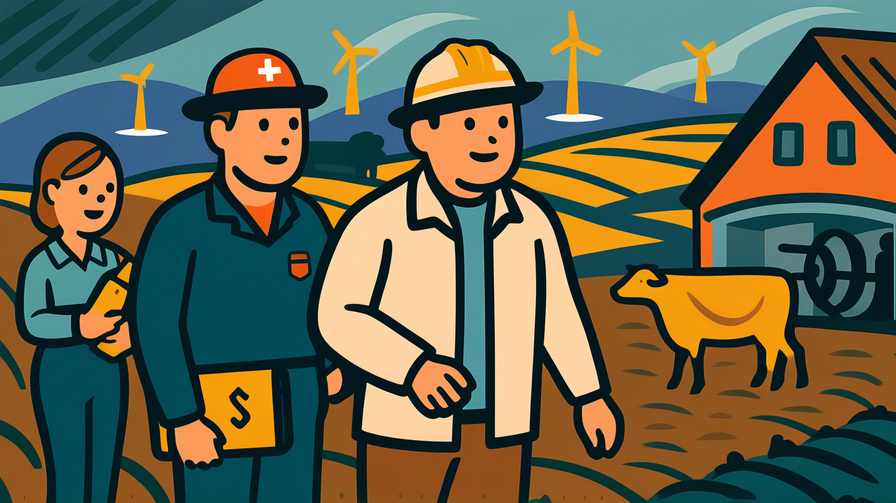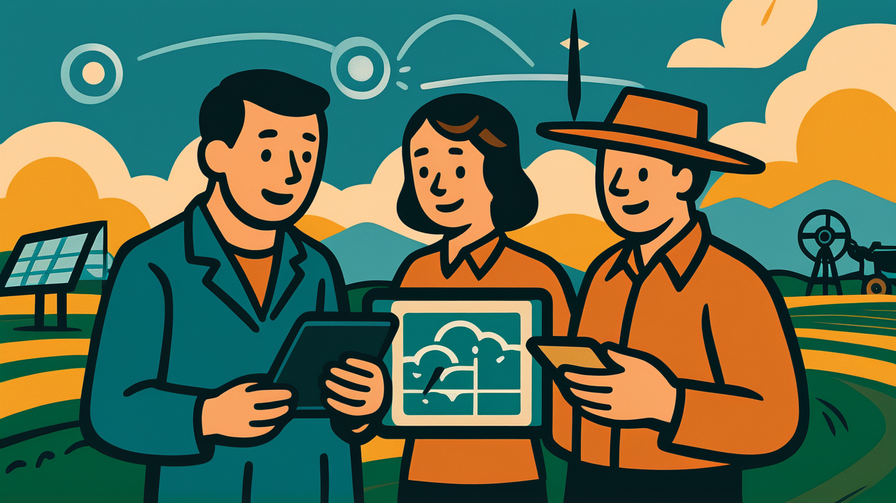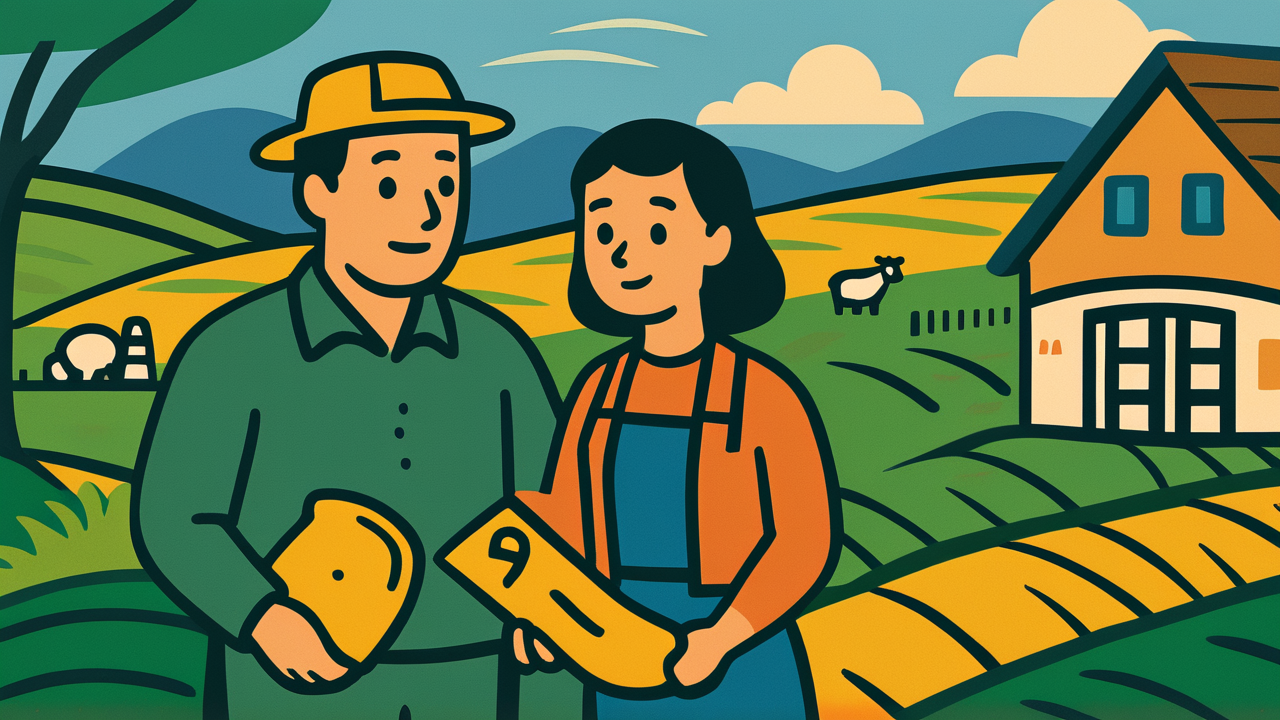[Disclaimer] This article is reconstructed based on information from external sources. Please verify the original source before referring to this content.
News Summary
The following content was published online. A translated summary is presented below. See the source for details.
NVIDIA’s Earth-2 platform has developed AI technology capable of predicting weather patterns two or more weeks into the future, a breakthrough in subseasonal climate forecasting. This technology is crucial as extreme weather events become more common and destructive. The system helps farmers choose appropriate crops and manage water resources in drought-prone areas, enables power companies to balance energy supply and demand, protects fisheries from marine heatwaves, and allows governments to prepare for natural disasters. The AI models can run much larger operational ensembles at compute costs orders of magnitude less than traditional methods. Using techniques like the Deep Learning Earth System Model (DLESyM), which couples atmosphere and ocean AI models, the system can generate thousands of forecast scenarios. The platform demonstrated its capabilities by predicting the 2021 Pacific Northwest heatwave weeks in advance. Earth-2 makes it possible for weather experts to validate models and for AI developers to scale solutions, with the entire process being more efficient than traditional forecasting methods. The system is being tested in competitions like ECMWF’s AI Weather Quest to accelerate community participation in advancing weather prediction technology.
Source: NVIDIA Developer Blog
Our Commentary
Background and Context

Have you ever wondered why weather forecasts become less accurate the further into the future they try to predict? Most weather apps can tell you pretty accurately if it’ll rain tomorrow, but ask them about two weeks from now and they basically shrug. NVIDIA’s Earth-2 platform is changing this game completely by using AI to predict weather patterns weeks in advance.
This isn’t just about knowing whether to bring an umbrella—it’s about saving lives and protecting communities from extreme weather events that are becoming more common due to climate change. Imagine if farmers knew a drought was coming a month early, or if cities could prepare for heat waves weeks in advance!
Expert Analysis
What makes Earth-2 special is how it approaches the problem differently than traditional weather forecasting:
The Ensemble Approach: Instead of making one prediction, Earth-2 generates thousands of possible scenarios. It’s like playing out a video game level thousands of times to see all possible outcomes. This gives probabilities—”there’s a 70% chance of above-normal temperatures”—rather than absolute predictions.
Ocean-Atmosphere Connection: The system uses something called DLESyM (Deep Learning Earth System Model) that understands how oceans and atmosphere interact. Since oceans change temperature slowly, they’re like the memory of our climate system, helping predict weather weeks ahead.
Cost Revolution: Running these predictions used to require supercomputers costing millions. Now, AI can do it for a fraction of the cost, making advanced weather prediction accessible to more countries and organizations.
Additional Data and Fact Reinforcement
The real-world applications are already impressive:
• Farmers can choose drought-resistant crops if dry weather is predicted
• Power companies can prepare for high AC usage during heat waves
• Fisheries can protect fish from marine heat waves that kill coral reefs
• Governments can pre-position firefighting equipment where fires are likely
The 2021 Pacific Northwest heatwave example is particularly powerful. This event killed hundreds of people and was considered “impossible” by traditional forecasting. Earth-2’s models started showing warning signs three weeks in advance—imagine how many lives could have been saved with that warning!
Related News
This development is part of a broader AI revolution in science. Just as ChatGPT changed how we interact with text, AI is transforming how we understand and predict natural phenomena. Companies worldwide are racing to develop better weather AI, with Google’s GraphCast and others competing with NVIDIA’s Earth-2.
The timing is critical. Climate change is making weather more extreme and unpredictable. Traditional forecasting methods, developed when weather was more stable, struggle with these new patterns. AI can learn from recent extreme events and adapt its predictions accordingly, making it better suited for our changing climate.
Summary

NVIDIA’s Earth-2 represents a breakthrough in weather prediction, using AI to forecast conditions weeks in advance at a fraction of traditional costs, potentially saving lives and protecting communities from extreme weather. By generating thousands of scenarios and understanding ocean-atmosphere interactions, it provides probabilistic forecasts that help everyone from farmers to governments prepare for what’s coming.
For students interested in climate science, computer science, or helping communities, this technology shows how AI can be used for social good. Whether you dream of being a meteorologist, programmer, or emergency manager, understanding these tools will be crucial. The future of weather prediction isn’t just about better forecasts—it’s about giving people the time they need to protect themselves and their communities from increasingly extreme weather.
Public Reaction
Meteorologists are excited but cautious, noting that while AI improves long-range forecasts, weather remains inherently chaotic. Farmers and agricultural organizations strongly support the technology, seeing it as a game-changer for crop planning. Emergency management officials praise the potential for better disaster preparation. Some critics worry about over-reliance on AI predictions, emphasizing the need for human expertise to interpret results. Climate activists see it as a tool for climate adaptation, though they stress it doesn’t replace the need for emissions reduction.
Frequently Asked Questions
Q: How accurate are these 2-week forecasts compared to regular weather apps?
A: They’re not as precise as tomorrow’s forecast, but much better than current 2-week predictions. Instead of saying “it will be 75°F,” they say “70% chance of above-normal temperatures.”
Q: Could this predict specific disasters like tornadoes?
A: Not individual tornadoes, but it can predict conditions that make tornadoes more likely, giving communities time to prepare emergency plans and resources.
Q: Will weather forecasters lose their jobs to AI?
A: No, AI is a tool that helps forecasters. Human expertise is still needed to interpret results, communicate risks, and make critical decisions about warnings.


